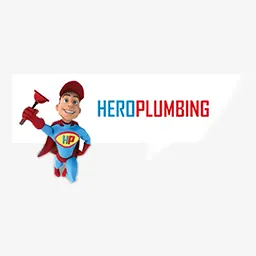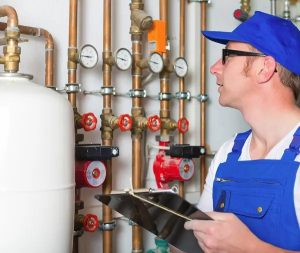Table Of Contents
- Replacing Galvanized Steel Pipes
- Why Is There A Need To Use Galvanized Pipes?
- Potential Problems With Galvanized Pipes
- The Expected Lifespan Of Galvanized Steel Pipes
- Signs Your Galvanized Piping Will Fail Soon
- Do Your Galvanized Pipes Need Replacement?
- When To Replace Galvanized Steel Pipes?
- Are You In Need Of A Plumbing Replacement?
Replacing Galvanized Steel Pipes
Galvanized pipes are steel pipes dipped in a protective zinc coating that helps prevent corrosion. These pipes are used predominantly as plumbing pipes. These galvanized pipes were created to replace the old lead pipes that were in use at that time.
They are silver in colour and can attract magnets. Most of the houses built before 1960 used galvanized piping. Although those galvanized water pipes were very beneficial in replacing lead piping, they might be linked with specific plumbing problems.
But what is the best time then to say, “Now I should replace my galvanized water pipes before it affects my water heater.” To know when is the time to replace galvanized pipes, you need to look for the life expectancy of the water pipes.
Why Is There A Need To Use Galvanized Pipes?
The galvanized pipes are primarily in use because of their durability. Specifically, galvanized pipes are dipped materials that provide more protection against corrosion. The continual exposure of the steel to the atmosphere makes them rust, and you cannot shield the steel from corrosion forever.
However, by using galvanization on the steel, the ability of the steel to withstand the harsh environment increases, and it increases the overall expected life span of the pipes. Galvanization tends to make the steel intact for a longer period of continual effects, including humidity.
Potential Problems With Galvanized Pipes
There was a time when galvanized pipes were famous all over the world. Mechanics and manufacturers would praise the durability of galvanized pipes. But not after too long the potential issues related to the galvanized pipes began to appear.
These issues are mostly related to the expected life span of the galvanized pipes. Also, the elements used in the galvanization could shrug off.
Some of the elements may cause severe problems with the material used and the health of people using those galvanized pipes in their homes as housing pipelines and in the industries using huge galvanized plumbing systems.
The Expected Lifespan Of Galvanized Steel Pipes
Galvanized pipes can last up to 70-80 years, but this is not true for every case. The expected life span of water pipes largely depends on the quality of the material used. Poor quality pipes mostly last for just 30-40 years. If you are experiencing problems with your galvanized water pipes, consider replacing them.
Signs Your Galvanized Piping Will Fail Soon
There are some significant signs that your galvanized steel pipes are failing or going bad. You need to observe these signs and consider taking appropriate action, even if that action is replacing your galvanized pipes.
Rust Spots
It is one of the early signs that your galvanized pipes will fall short, and it is the best time to replace those pipes. When galvanized pipes are first installed, they tend to look similar to nickel in colour. Later on, with time, the water supply lines get corroded and form crusts around them.
The rusty pipes take on dull light or dark greyish tones. It also decreases the expected life of the pipe and causes the leaking of water through the water pipe, which could cause damage to your water heater if you have one.
To check if the pipes are rusty or not, take a screwdriver and scratch the outsides of the pipes; they may show signs of rusting and tend to get dull in color. Alternatively, if you find large lumpy rusty growths around the joints, it is probably the best time to consider upgrading the pipes.
Discoloured Water
Inspect the water coming out of the faucets. If you notice discoloration in the water, it is time to replace your galvanized steel pipes.
Galvanized pipes could affect the water quality you have from the faucets in your kitchen or sink. Have you ever noticed the unpleasant sight of discoloured water coming from your sink? Or have you ever gone through a disturbing odour filled experience while doing your dishes in your kitchen?
Unfortunately, this is the sign that your galvanized steel pipes have served you for a long time. Galvanized steel pipes could be the reason for that unpleasant smell or sight. Galvanized pipes release traces of iron. With time it gets mixed with the water flowing through it.
This may change the colour of the water coming out of faucets and also make it unpleasant to smell. This iron-infused water could also damage the fixtures of the piping. Therefore, it is the best time to replace your galvanized steel pipes.
Low Water Pressure
If you notice lower water pressure coming out of the faucets than usual, that may be a sign of leakage or rustiness of the water pipes. This could be the indication that your galvanized piping needs to get replaced. The uneven build up of mineral deposits, dirt, and debris inside the water pipes can cost thousands to resolve the problem. Therefore, it would be wise to replace the galvanized pipes.
Lead Contamination
Lead content in the water coming out of the faucets of the galvanized water pipes is the main sign that the expected lifespan of your water pipes is over, and they need to be replaced. Sitting on your couch, you might not be worried about the health of yourself and your family, as you are not directly exposed to lead.
But the silent killer is in your home. Your galvanized steel pipes could be the source of low-level lead contaminants in the water. Older galvanized pipes may be a threat to the health of your loved ones. Older galvanized pipes were dipped in the zinc, which was a threat, as zinc coating could be the source of lead dissolved in water.
They were of no harm when they were created first. But with time, the lead particles continue to fall and get dissolved in water flowing through them. In this case, water coming from the faucets could be the lead source. You must not shrug off the poisonous lead. It could cause high blood pressure, headaches, muscle weakening, and pain.
To be on the safer side, inspect the water flowing out of the kitchen faucets. Moreover, if you notice high lead content, immediately replace your galvanized steel pipes.
Do Your Galvanized Pipes Need Replacement?
It is not always with galvanized pipes that they would cause problems. It is also the natural aging process. As they continue to age, their quality decreases, which could be why your piping system is causing problems for you. You should keep an eye on your galvanized pipes and consider replacing them if they have been in use for a pretty long time.
This will save you from some of the significant potential problems linked with galvanized pipes. If you find the problems mentioned above with your plumbing system, you should ask yourself, “What do I do now?” Well, you will need to conduct a complete inspection of your piping to help you identify the fundamental causes and areas that need to be replaced.
This tends to discover whether or not all existing pipes need to get replaced; also, it would be cost-effective. Nowadays, copper is the preferred material in plumbing systems, but it can be a bit costly. Another alternative to copper is PVC pipes. PVC pipes work best for both drainage and waste plumbing, while the use of copper is only limited to the main water supply.
When To Replace Galvanized Steel Pipes?
Galvanized steel pipes will cause problems at some point in their usage period. If you are replacing your galvanized pipes from your house, it is worth it. However, if you face specific problems mentioned above, you should consider replacing those galvanized pipes on an urgent basis.
Are You In Need Of A Plumbing Replacement?
When looking at residential or commercial plumbing projects, professional plumbers should be honest, reliable, always ready to set their clients’ minds at ease, and offer you the best options to suit your needs. Don’t choose a cheaper company over one with more experience as cost and experience can be deceiving.
If you need help with replacing your galvanized pipes, don’t hesitate to contact expert plumbers in your locality. However, only contact a company you have done the necessary research for to ensure you are getting what you pay for.











